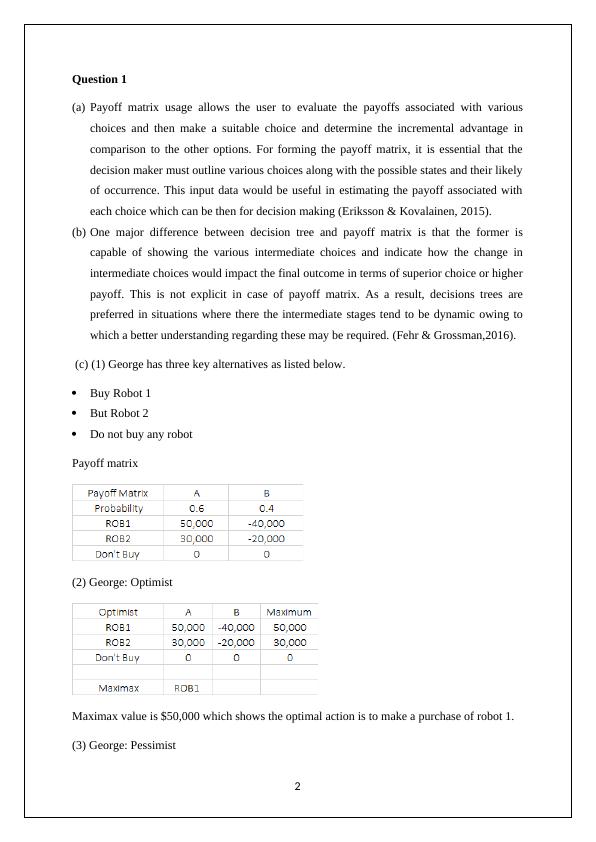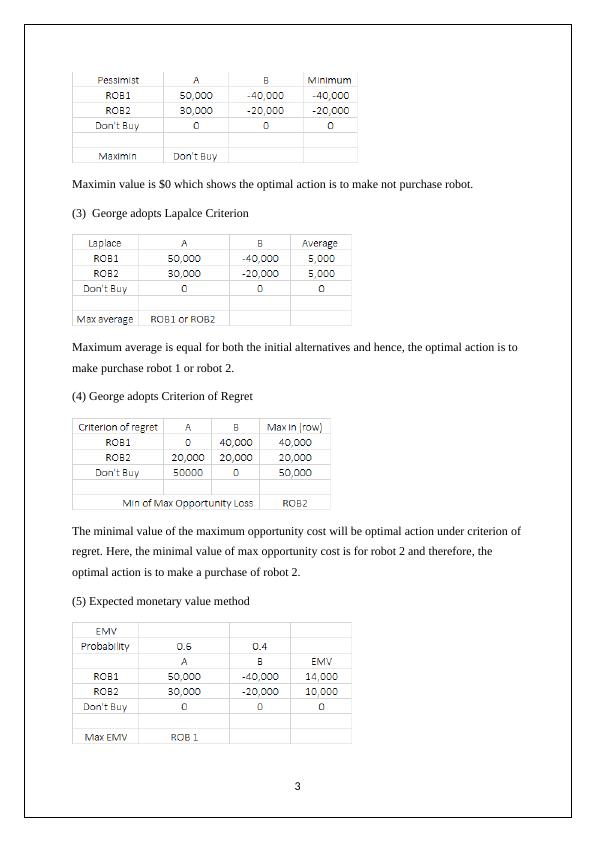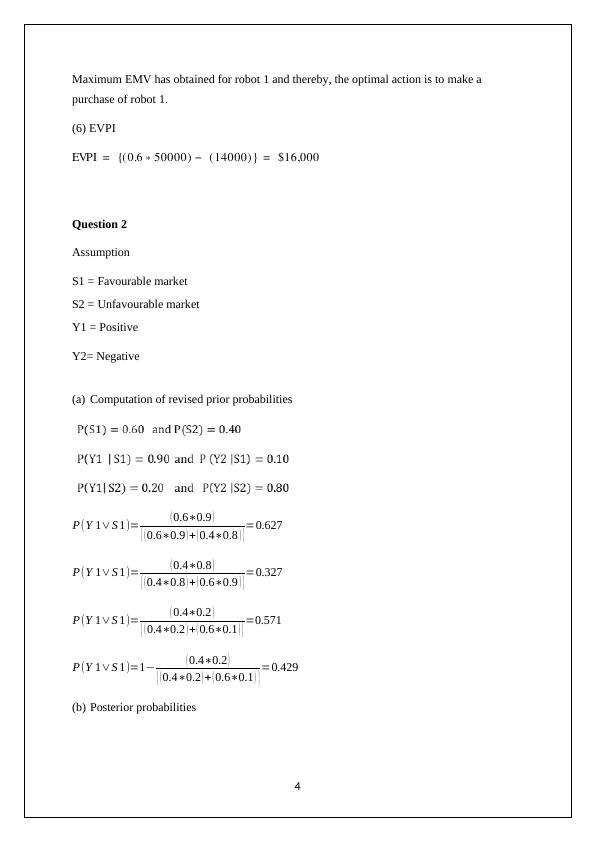Decision Support Tools
12 Pages1601 Words98 Views
Added on 2023-03-20
About This Document
This document discusses decision support tools such as payoff matrix and decision tree. It explains the usage and differences between these tools. It also provides examples and methods like maximax, maximin, Laplace Criterion, Criterion of Regret, and Expected Monetary Value. Additionally, it covers simulation models and regression analysis.
Decision Support Tools
Added on 2023-03-20
ShareRelated Documents
End of preview
Want to access all the pages? Upload your documents or become a member.
Decision Support Tools
|11
|1778
|53
Decision Support Tools
|12
|4384
|95
Decision Support Tools
|14
|5377
|493
Advantages of Payoff Matrix and Decision Trees
|12
|1301
|70
Decision Support Tools
|12
|1383
|100
Advantages of Payoff Matrix for Decision Making
|11
|1514
|197




